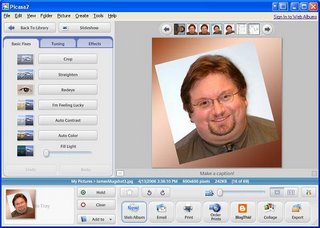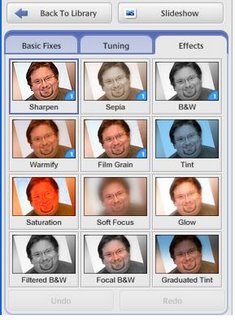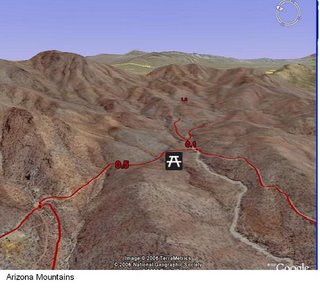Planning Your Course Design
Q: If you were planning to build a 5 bedroom, 3 bathroom house, would you start off building a one-room cabin?
Whether you are building a house or a course site, remodeling will become a major pain, especially if the original design is inflexible and requires a large amount of maintenance. In the same manner that the pain and expense of remodeling a house causes many homeowners to abandon their plans, a course site that needs major remodeling might be left as "good enough" far longer than it should.
Starting with a Blueprint
Q: On any journey, isn't knowing where you are going important in getting there efficiently?
The design of a new course is easiest if you start with a clear plan. The foundation of this plan needs to be the learning objectives that you have for your students. These learning objectives, created at various scopes from course level through module level to specific activity level, will create the scaffolding to which all other course activities and content will attach. On any journey, knowing where you are going and the waypoints inbetween are vital in getting to your destination. Whether by car or through learning process, having a clear map makes the process less stressful.
The "course plan" is not just for the benefit of the designer of the course, but it also serves any other instructors teaching from the course materials (with permission of the creator, of course), as well as students within the course. Clear objectives will focus student efforts in their studies and clarify expectations in assignments and assessments.
Making It Modular and Granular
Q: Do you pick out the floor tile before determining what style of house you want to build?
One of the greatest benefits of the web is that documents can link to other documents. This allows you to break up your content into small, granular pieces, and it supports the learning process of "drilling down" from the "big picture" theory, through understanding of applications, to analysis and use within a specific context (case study, for instance). If you think about your design as letting students "zoom into" the details, your content will naturally become more modular and granular. When any specific document goes out of date, then just that document needs to be edited. If a new textbook presents content in a different order or introduces a few new theories to replace existing ones, your course content will be easy to "shuffle" into the position to parallel the text.
Start with an outline of the course materials. At Level 1 (top level), determine what are the major theories, concepts, and processes that students need to learn? Level 2 will list the components, sub-processes, and applications of the Level 1 ideas. Level 3 will add very specific terminology, examples, visuals, and questions that provide the details. Using an analogy of constructing a house, Level 1 is the foundation and framing (base structure and boundaries), Level 2 is the interior layouts and infrastructures (plumbing, electrical, wall boundaries, room functions), and Level 3 is the furniture and fixtures (creating real-world usability).
Just as with furniture in a home, you wouldn't nail and glue chairs and tables into the flooring, so therefore, keep the lower-level details separate and flexible within your content design. This allows you greater freedoms to change your design and layout as well as make quick substitutions.
It Takes Practice!
Learning can be fun, but it also takes effort. In the same manner that you cannot learn to play concert piano or to ride a bike by watching someone else (or reading their instructions), designing a course in a flexible, modular, and well-planned manner may cause some mental "bruises and scraped knees." However, the more practice you get, the more instinctive the process will become.
Best wishes in your designs. Coming soon... my Content Freshness model.
James








 I would like to just pass out a quick referral to the blogging site of Barry Dahl, current co-chair of the MnOnline Council.
I would like to just pass out a quick referral to the blogging site of Barry Dahl, current co-chair of the MnOnline Council.





